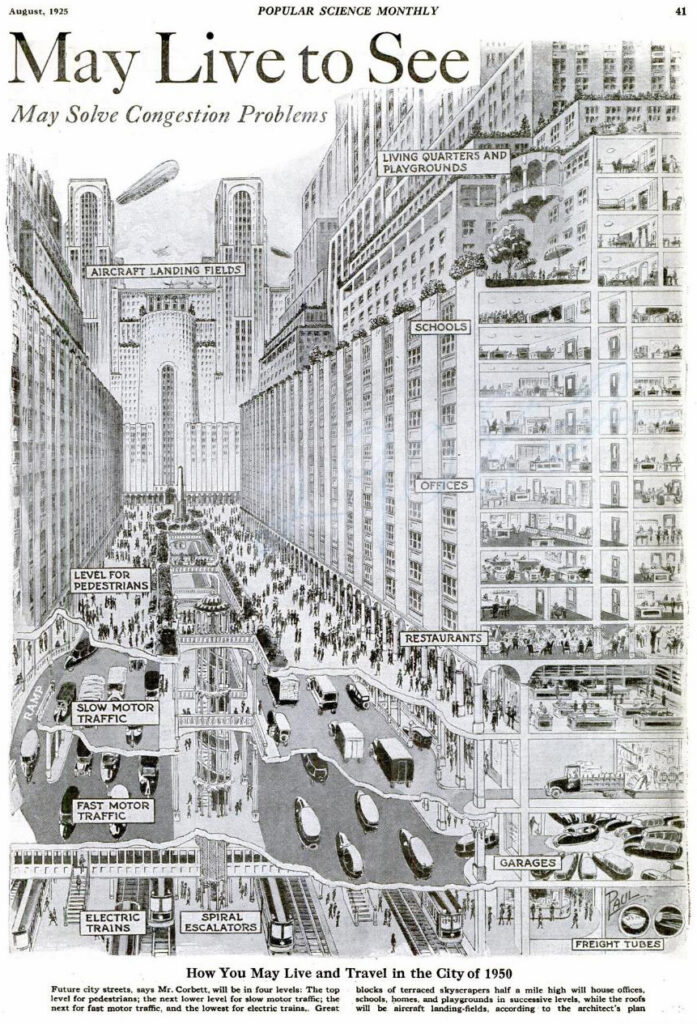One of the first counter-arguments people raise is that underground roads would be excessively expensive. However, when all is counted up an ultra compact city will actually be considerably more economical than a traditional city.
The costs would be higher pr house than in a conventional city. But not a lot more.
We are talking about adding 2-3 floors of building mass across the city’s entire road network. If the average building size is 40 storeys, this doesn’t amount to an unacceptable price increase.
The additional basements each building would need can easily be utilized for parking, storage, workshops or even shopping centres. They will not be wasted. Shorter distances will also reduce the amount of infrastructure required, be it motorways or water supply.

Popular Mechanics 1925
Sprawling cities are cheap for developers but expensive for society
Generally, the spread-out city is built so due to a difference between the individual developer’s best interest and the best interest of the community. It is cheap to build relatively low and spread out, and the developer doesn’t pay the price for the additional infrastructure required.
As an individual homeowner, you also gain from living in a detached house close to a major metropolis. Your house is cheap to build, you get a garden for free and you are still only a short drive away from the trappings of the big city. But, when everyone builds like that, you end up having to spend half your day commuting to get to work or afternoon activities.
Tall and compact cuts total investment and operating expenditure
Putting the roads under ground and building tall compresses the city considerably, and makes the city centre an attractive place not only to work but also to live and play. What is expended extra on the city’s construction is regained from much reduced requirements for motorways and other infrastructure.
The Ultra Compact City also lends itself nicely to high-rise building, something which leads to reduced energy usage and the associated “operating expenditure”: Both heating and cooling becomes much cheaper as buildings become larger and the relation between interior volume and surface area increases. Construction costs pr housing unit also falls with high-rises compared to stand-alone houses.
<-Previous Page Up Next Page->
